Birdfinding.info ⇒ Common and conspicuous on rocky headlands and coastal waters of Peru and Chile. Often found in ports, including cities such as Lima and Valparaíso, where it readily perches on boats, docks, and buildings.
Inca Tern
Larosterna inca
Pacific Coast of South America. Strongly associated with the Humboldt Current marine ecosystem.
Nests on rocky islets and coastal headlands from northern Peru (La Libertad) to central Chile (Constitución).
Mostly resident in the vicinity of breeding grounds, with moderate numbers dispersing in both directions along the coast, south to around Valdivia and north to Ecuador, rarely to Colombia.
Strong El Niño events have caused irruptions of large numbers north to Panama. Smaller numbers of vagrants have reached Costa Rica, the Galápagos, and the vicinity of Chiloé Island and Puerto Montt.
Exceptional vagrants have been recorded north to Guatemala (Barra La Criba, April 27, 2019), and west to Hawaii (South Point, Big Island, March 2021).
Identification
Unique and distinctive: a robust dark-gray tern with long white whisker plumes and a bright yellow gape.
The extraordinary whiskers curl down and flare out from the cheeks.
The bill and feet are deep coral-red, which can be as richly vivid as wet paint.
Structurally reminiscent of a gull, with a heavy-looking body and broad wings for a tern.
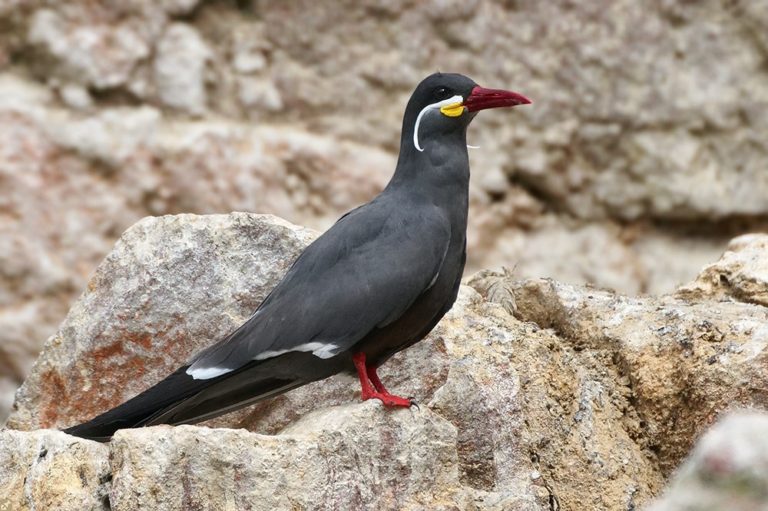
Inca Tern. (Ica, Peru; May 22, 2017.) © Bernd Dietrich
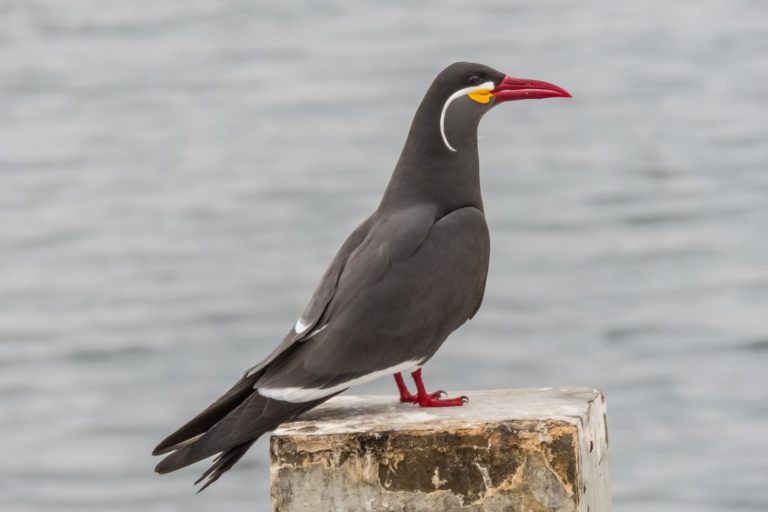
Inca Tern. (Paracas, Peru; May 24, 2018.) © crm211b
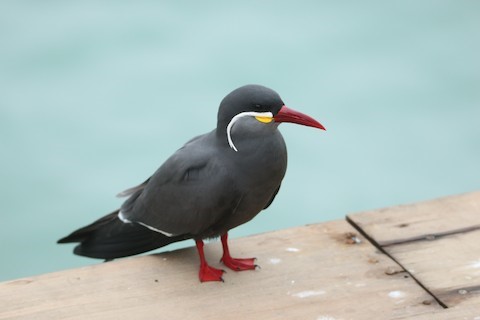
Inca Tern. (Miraflores, Lima, Peru; July 27, 2018.) © Ken Oeser
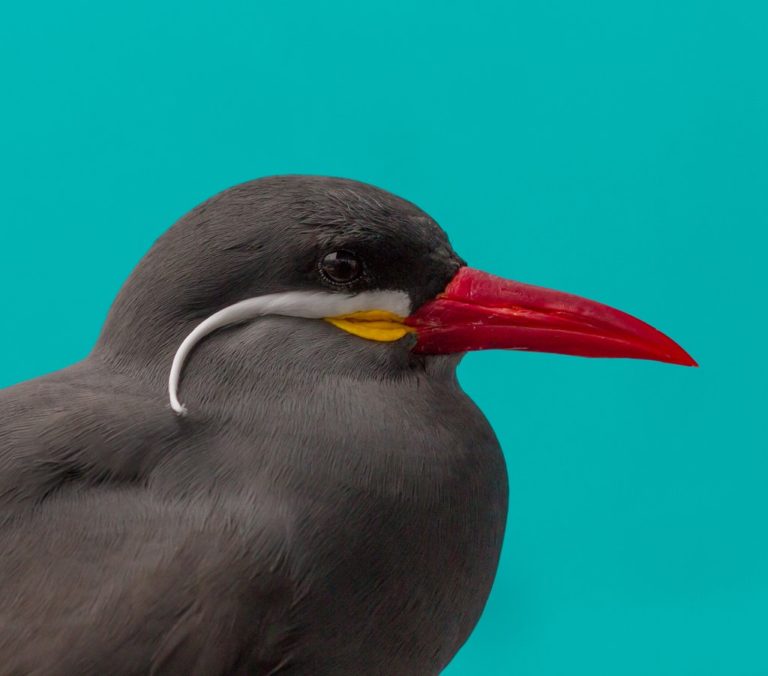
Inca Tern. (Lima, Peru; August 18, 2016.) © Cullen Hanks
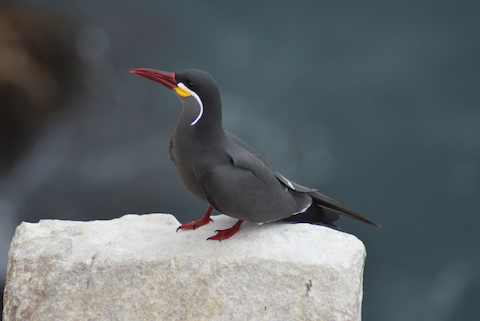
Inca Tern. (El Faro de Matarani, Arequipa, Peru; May 6, 2014.) © James Dee
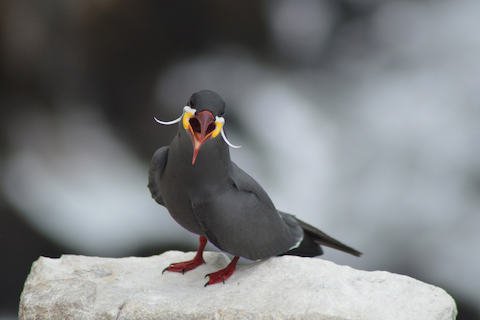
Inca Tern. (El Faro de Matarani, Arequipa, Peru; May 6, 2014.) © James Dee
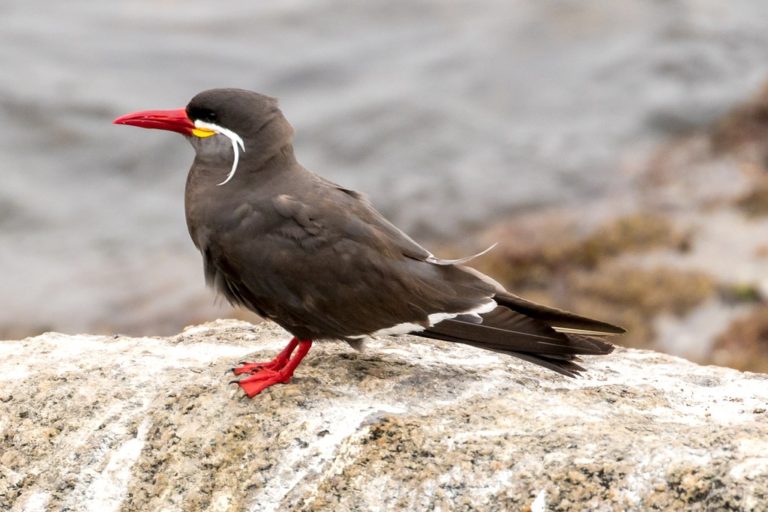
Inca Tern. (Viña del Mar, Chile; February 13, 2018.) © John Reynolds
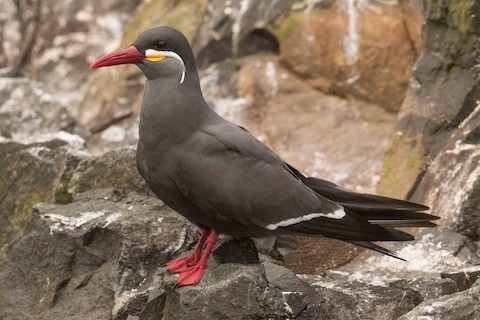
Inca Tern. (Isla Pucusana, Lima, Peru; July 21, 2016.) © Eric VanderWerf

Inca Tern. (Viña del Mar, Chile; February 17, 2019.) © Amanda Starbuck
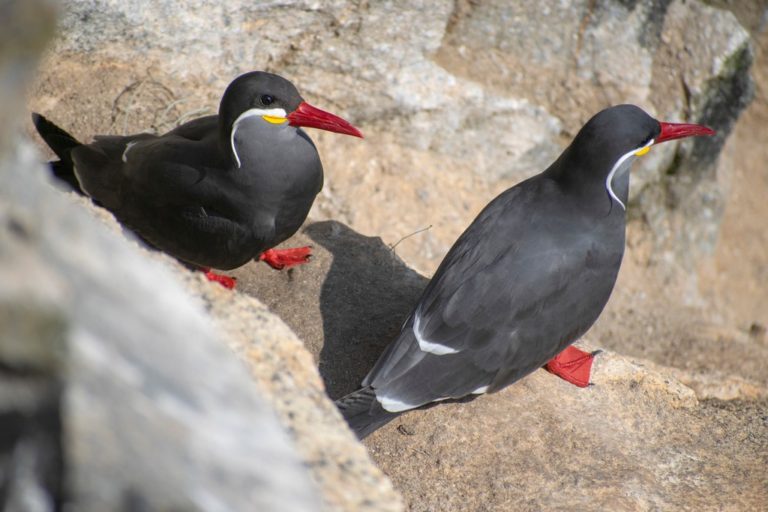
Inca Tern. (Lima, Peru; April 19, 2019.) © Monics Paredes
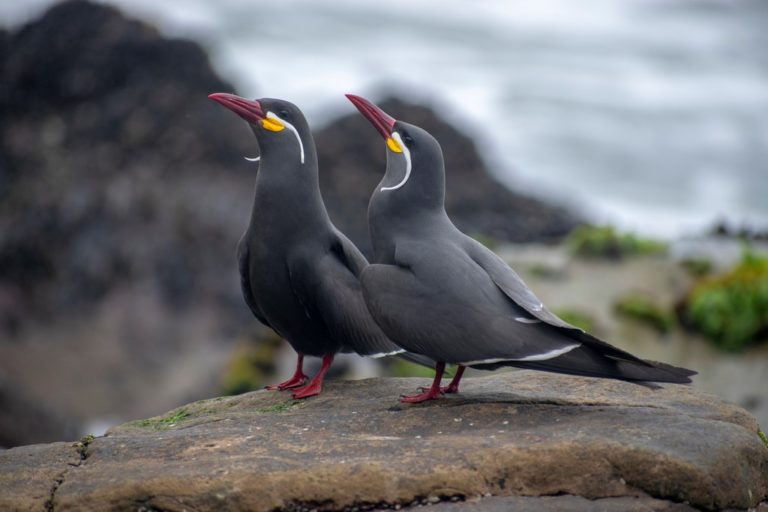
Inca Tern. (Lima, Peru; November 17, 2019.) © Monics Paredes
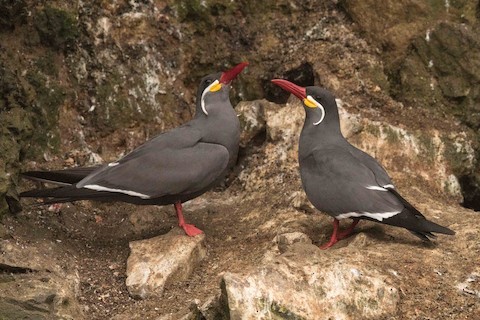
Inca Tern. (Isla Pucusana, Lima, Peru; July 21, 2016.) © Eric VanderWerf

Inca Tern. (Miraflores, Lima, Peru; July 27, 2018.) © Ken Oeser
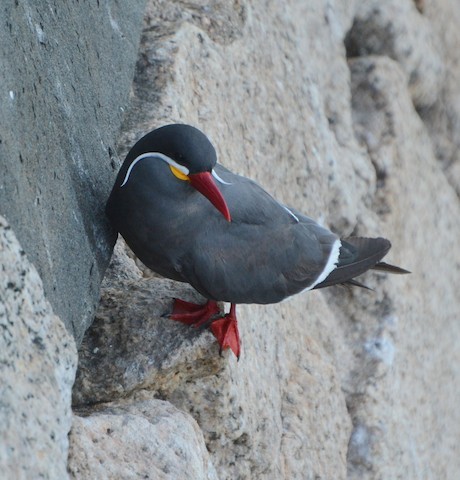
Inca Tern. (Viña del Mar, Chile; March 27, 2018.) © Geoff Carpentier

Inca Tern. (Pucusana, Lima, Peru; March 17, 2011.) © Luke Seitz

Inca Tern. (Miraflores, Lima, Peru; July 27, 2018.) © Ken Oeser
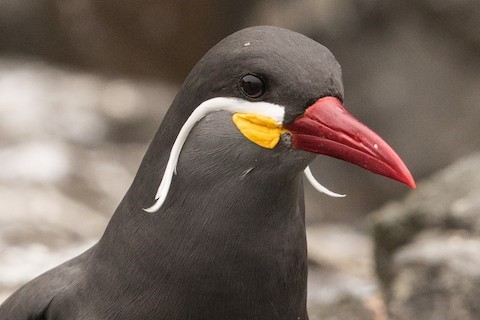
Inca Tern. (Isla Pucusana, Lima, Peru; July 21, 2016.) © Eric VanderWerf

Inca Tern. (Lima, Peru; August 18, 2016.) © Cullen Hanks

Inca Tern. (Valparaíso, Chile; November 26, 2015.) © dhfischer

Inca Tern. (Viña del Mar, Chile; November 8, 2020.) © Dario de la Fuente
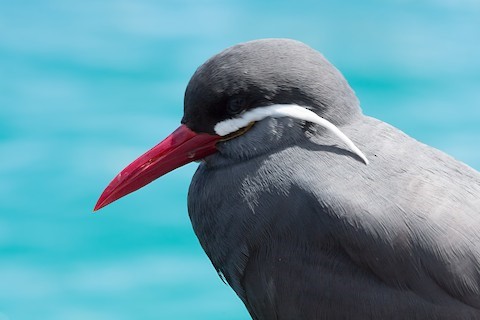
Inca Tern, subadult—appearing fully adult but lacking the yellow gape. (Isla San Cristóbal, Galápagos, Ecuador; April 23, 2017.) © Renato Espinosa

Inca Tern. (Miraflores, Lima, Peru; July 27, 2018.) © Ken Oeser

Inca Tern. (Isla Pucusana, Lima, Peru; October 14, 2017.) © Blake Matheson

Inca Tern. (Barra La Criba, Guatemala; April 27, 2019.) © John Cahill xikanel.com
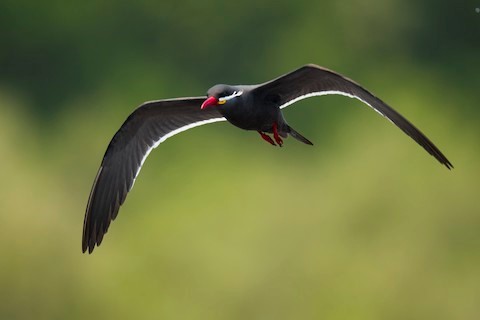
Inca Tern. (Barra La Criba, Guatemala; April 27, 2019.) © John Cahill xikanel.com
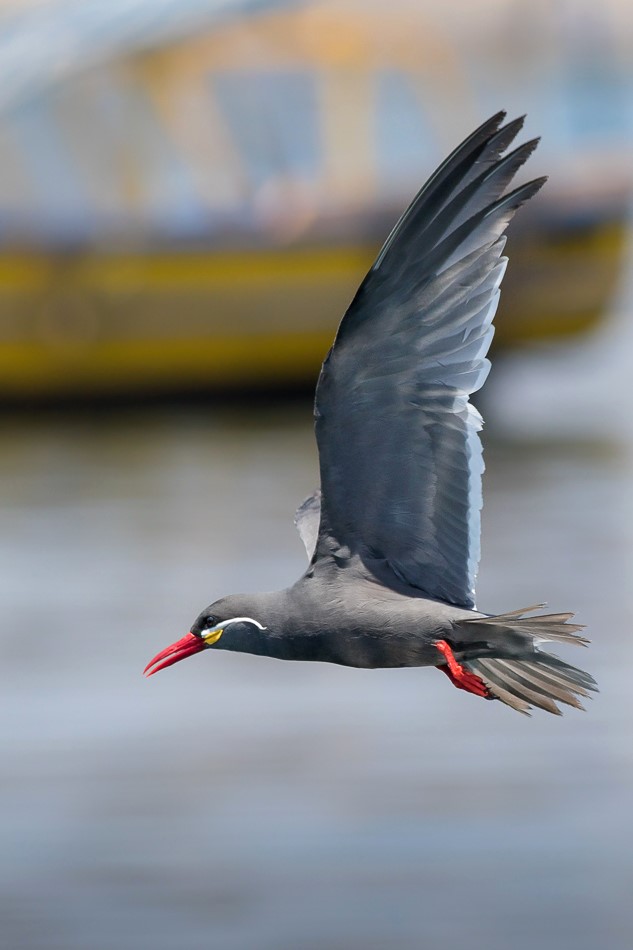
Inca Tern. (Coquimbo, Chile; February 14, 2018.) © Jorge Schlemmer
Immature Plumages. Juveniles are brown overall with buffy edges and a dark bill and feet.
Older immatures become gray overall. The initial whisker plumes are also gray.
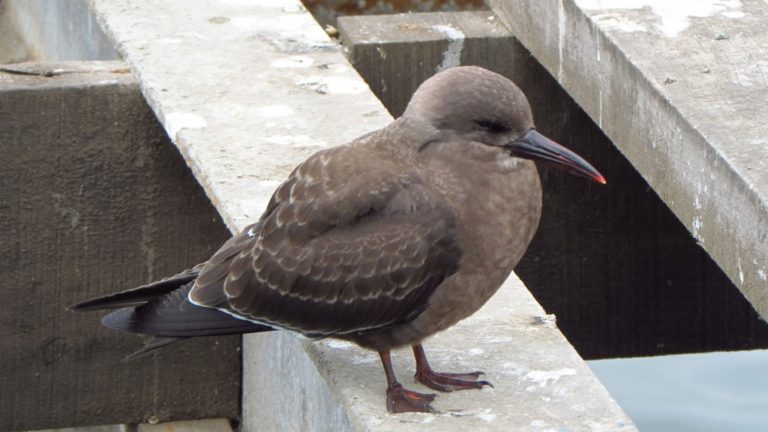
Inca Tern, juvenile. (Coquimbo, Chile; July 22, 2014.) © Nicolás Mercado
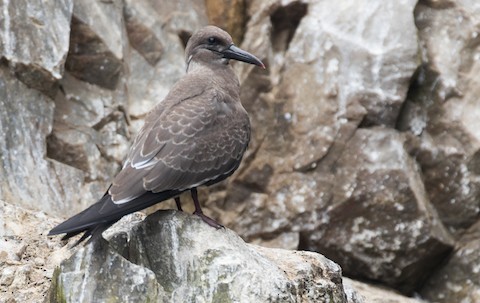
Inca Tern, juvenile. (Isla Pucusana, Lima, Peru; October 14, 2017.) © Blake Matheson
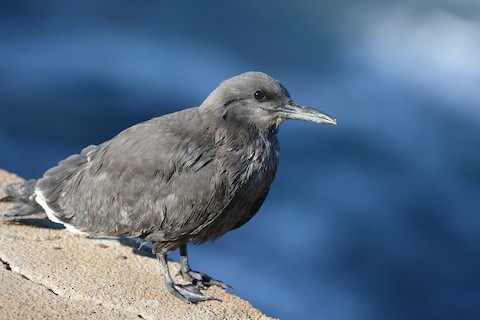
Inca Tern, immature. (Viña del Mar, Chile; March 27, 2018.) © Geoff Carpentier
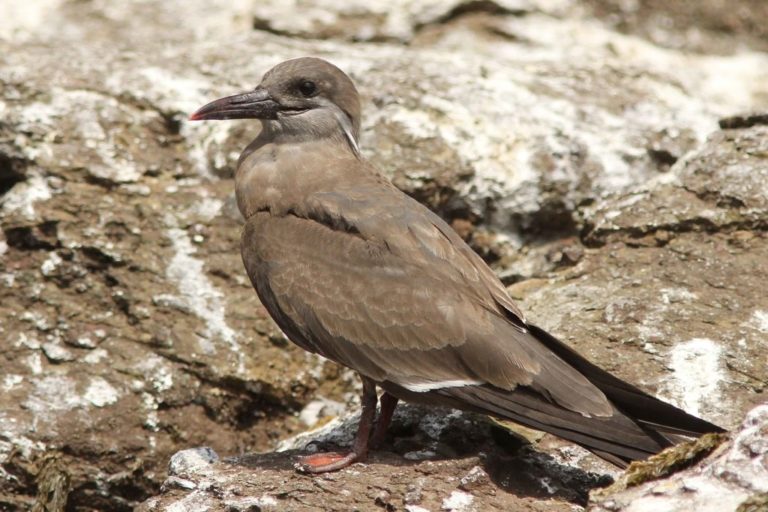
Inca Tern, juvenile. (Lima, Peru; November 3, 2014.) © David Beadle

Inca Tern, juvenile. (Isla Pucusana, Lima, Peru; July 21, 2016.) © Eric VanderWerf
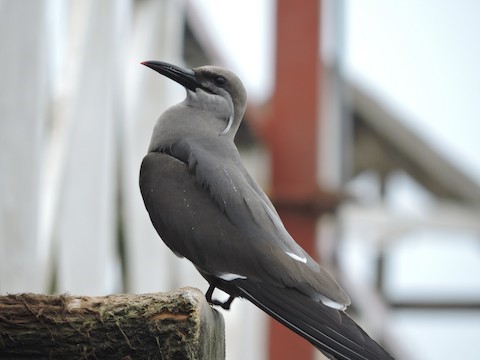
Inca Tern, immature showing gray whiskers. (Playa Huanchaco, La Libertad, Peru; July 19, 2017.) © Deivy Gómez Rodríguez
Eventually the whiskers turn white and the bill and feet turn red. The last adult feature to develop is the yellow gape.
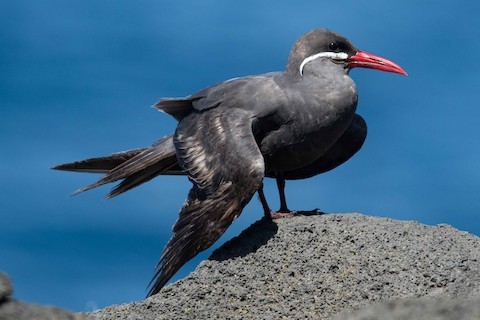
Inca Tern, subadult—note absence of yellow gape and white trailing edge on wing. (South Point, Big Island, Hawaii; March 14, 2021.) © Eric VanderWerf
Notes
Monotypic species.
IUCN Red List Status: Near Threatened.
References
BirdLife International. 2018. Larosterna inca. The IUCN Red List of Threatened Species 2018: e.T22694834A132576903. https://dx.doi.org/10.2305/IUCN.UK.2018-2.RLTS.T22694834A132576903.en. (Accessed April 6, 2021.)
de la Peña, M.R., and M. Rumboll. 1998. Birds of Southern South America and Antarctica. Princeton University Press.
eBird. 2021. eBird: An online database of bird distribution and abundance. Cornell Lab of Ornithology, Ithaca, N.Y. http://www.ebird.org. (Accessed April 6, 2021.)
Harrison, P. 1983. Seabirds: An Identification Guide. Houghton Mifflin, Boston.
Jaramillo, A. 2003. Birds of Chile. Princeton University Press.
McMullan, M., and T. Donegan. 2014, Field Guide to the Birds of Colombia (Second Edition). Fundación Proaves de Colombia, Bogotá.
Ridgely, R.S., and P.J. Greenfield. 2001. The Birds of Ecuador, Volume II: Field Guide. Cornell University Press.
Ridgely, R.S., and J.A. Gwynne. 1989. A Guide to the Birds of Panama (Second Edition). Princeton University Press.
Schulenberg, T.S., D.F. Stotz, D.F. Lane, J.P. O’Neill, and T.A. Parker. 2007. Birds of Peru. Princeton University Press.
Xeno-Canto. 2021. Inca Tern – Larosterna inca. https://www.xeno-canto.org/species/Larosterna-inca. (Accessed April 6, 2021.)

